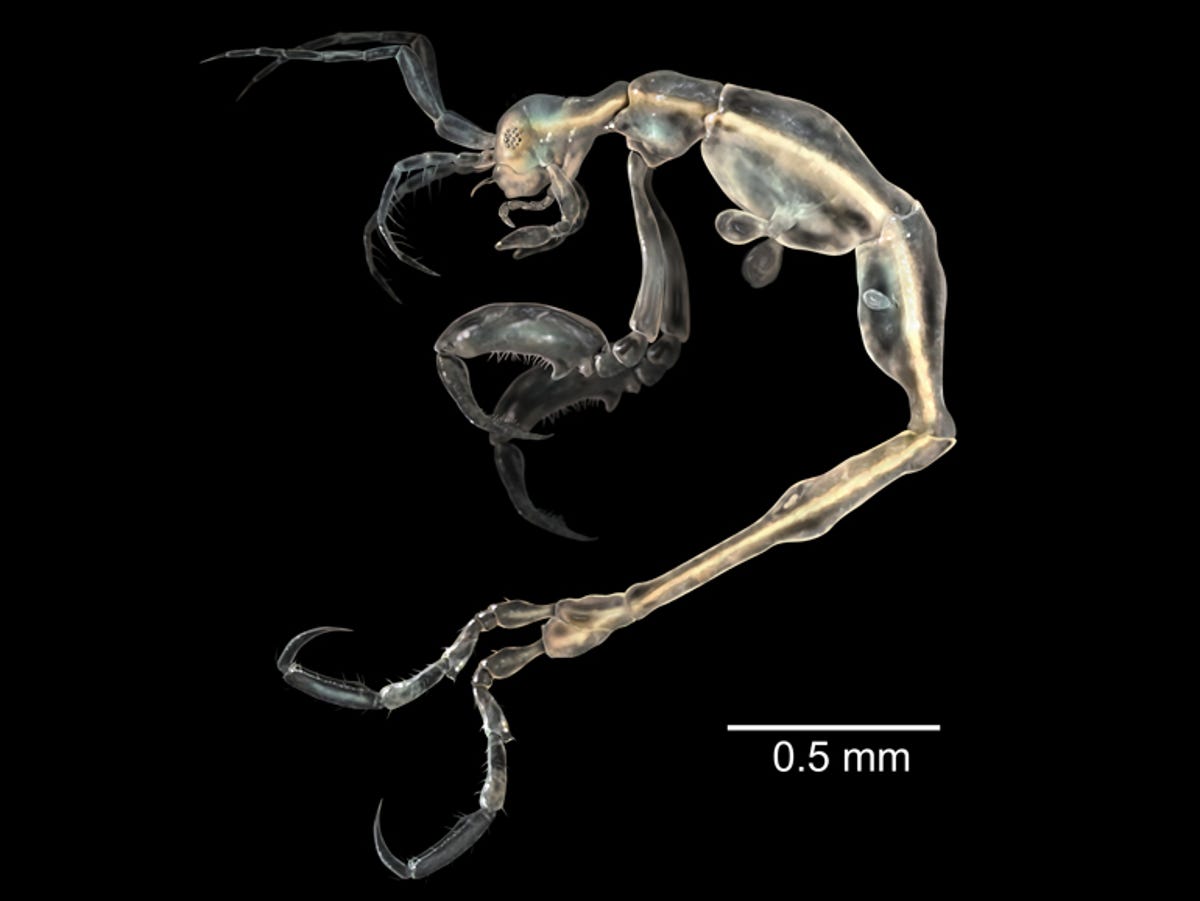Top 10 new species of 2014 (pictures)
The top 10 new species discovered in 2013 include a see-through crustacean, upside-down Antarctic flowers and a tree nicknamed "Mother of Dragons".

Skeleton Shrimp
Liropus minusculus
This tiny shrimp, discovered in a cave on Santa Catalina off the coast of Southern California, is the smallest in its genus: the male measures just 3.3mm in length (0.125 inches), and the female just 2.1mm (less than 0.1 inches). It's also the first of its genus to be found in the northeastern Pacific, and its teensy body is translucent, giving it a ghostly appearance.
Kaweesak's Dragon Tree
Dracaena kaweesakii
Nicknamed "The Mother of Dragons" by the IISE, Kaweesak's Dragon Tree was named after a friend and member of the international team who found it in Thailand, Kaweesak Keeratikiat. Native to Burma and Thailand, the tree is a relation of the Canary Island dragon tree, Dracaena draco. It has long, sword-shaped leaves edged in white, and cream-coloured flowers with orange filaments. It grows in the limestone mountains of Thailand, a resource that is mined for the production of cement, and the tree has thus been categorised as endangered.
ANDRILL Anemone
Edwardsiella andrillae
These strange and dainty anemone growing upside-down under the Antarctic ice were discovered by accident when the National Science Foundation conducted its first test run of the SCINI robot. The robot, designed to monitor ocean currents, was sent through a hole drilled in the Antarctic ice -- and sent back images of the first known anemone species to live on the ice. How exactly they manage to survive in such harsh conditions is still unknown. You can read more about the discovery here.
Clean Room Microbe
Tersicoccus phoenicis
A clean room is a space specifically designated for the purposes of manufacturing or scientific research, meant to be as sterile as possible. Nevertheless, this microbe managed to survive the sterilisation process: it was found in two separate clean rooms over 4,025km (2,500 miles) apart -- one in Florida and one in French Guiana.
Olinguito
Bassaricyon neblina
This cuddly-looking tree-dwelling omnivore is the first new carnivorous mammal found in the Western Hemisphere in 35 years. Belonging to the Procyonidae family -- which includes raccoons -- it lives in the Andean forests of Colombia and Ecuador, surviving on a diet of fruit, insects and nectar, and rarely -- if ever -- descending from the trees. It's also the smallest species of its genus, coming in at an average weight of just 900g (2 pounds).
Orange penicillium
Penicillium vanoranjei
Although it has spores of a bright orange colour (see inset), this species of penicillium, the fungus from which penicillin is derived, was actually named to honour Dutch royalty, His Royal Highness the Prince of Orange. It was discovered in soil excavated in Tunisia.
Amoeboid Protist
Spiculosiphon oceana
This single-celled organism measures a whopping 4cm to 5cm (1.5 inches to 2 inches) in height, a massive size for its kind. It is a kind of foraminifera, which is a category of amoeboid that builds a protective shell from found items, and it dwells beneath the Mediterranean Sea. It was initially thought to be a sponge for its peculiar behaviour: it collects skeletal fragments of dead sponge from the seabed and glues them to itself with a sort of protein glue similar to that used by sponges. It also feeds like a sponge, extending arms to collect and feed on tiny invertebrates that have become trapped in the spines.
Cape Melville Leaf-Tailed Gecko
Saltuarius eximius
This pretty gecko, discovered in and unique to Australia's Melville Range on Cape Melville, is distinctive for its mottled camouflage colouring, slender body, longer limbs and large eyes. It lives in rocky habitats and trees in rainforests, and measures about 20cm (7.8 inches) in length. It's believed to be a relic species from a time when rainforests were more common in Australia.
Tinkerbell Fairyfly
Tinkerbella nana
It doesn't look a lot like the popular character from Peter Pan, and it's not even really a fly: the The fairyfly family that derives its name from its delicately fringed wings, is actually a family of parasitoid wasps. The Tinkerbell Fairyfly is one of the 1,400-member strong family's smallest members, measuring just 250 micrometers in length, and dwells in the forests of Costa Rica. Although its host is unknown, it presumably lives no longer than just a few days.
Domed Land Snail
Zospeum tholussum
This teeny tiny snail may look like the glass shells you can buy for your pet hermit crab, but it's actually a land-dweller, living deep in the Lukina Jama-Trojama caves of Croatia some 900 metres (nearly 3000 feet) beneath the Earth's surface -- in complete darkness. It's only 2mm in length, and only one living specimen was found, in a large cavern with a small stream of running water nearby; however, many shells of dead snails were also found in the area. Researchers guess that these tiny animals, which move very slowly on land -- perhaps only as much as a few centimetres a week -- travel in water or on other cave-dwelling animals for longer trips.

